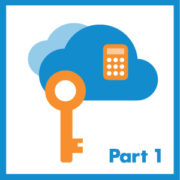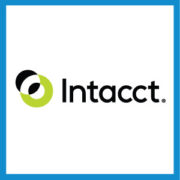How to Choose the Right Basis of Accounting for Nonprofits
Being successful as a nonprofit means that everything needs to fall into place when and where it needs to fall into place. Knowing this, there are many different considerations and moving parts that you can control in order to gain additional visibility, save time, and improve outcomes.
While we discussed some of these factors, including the shift to outcome metrics and things to understand before selecting or changing from a calendar year to a fiscal one, today, we would like to turn our attention to another important consideration: How to choose a basis of accounting.
A recent AICPA article explored the basics on selecting a basis, and how to decide on whether a cash basis, accrual basis, modified cash basis, or tax basis is the proper way to look at the numbers, comparing these options and offering tips on how to select the one that makes the most sense to your nonprofit.
Different Bases of Accounting for Nonprofit Organizations
Whether cash, accrual, modified, or tax year, each basis of accounting listed below poses opportunities and challenges in measurement, disclosure, and reporting.
Cash Basis
If a nonprofit organization uses the cash method of preparing its accounting records and statements, it recognizes income and expenses when they occur. In other words, the nonprofit would record income when it received the funds and not when it is actually earned. It would also record expenses at the time it paid the bill rather than when it incurred the expense.
Example
This is a common approach for smaller nonprofits, as it mirrors a personal “checkbook accounting,” entering debits or credits as they are completed. For example, under a cash basis, if you receive a $10,000 pledge today, you do not record the $10,000 until the money is in the bank.
Pros and Cons
Pros and cons of the cash basis are as follows:
- Pro: Easier to use on a day-to-day basis as it only requires one entry per transaction.
- Pro: Due to its straightforward nature, cash basis requires less work and less stress when working with slow-paying funding sources (as opposed to accrual accounting, where money would be booked but the bank accounts could be barren)
- Con: Must put a disclaimer on year-end reports that you use a cash basis.
- Con: Presents challenges in visibility, especially for larger nonprofits.
Accrual Basis
Using the accrual method of accounting, a nonprofit recognizes income when they earn it, rather than when they receive it. It would also recognize expenses when they were incurred instead of when the organization paid the bill. For example, using the accrual method a nonprofit would recognize a pledge as income. That would hold true even if it had not yet received all the money, or even any amount of the donation pledged.
Example
Under the accrual method, nonprofits would record revenue and expenses when the transaction takes place, regardless of whether the cash has changed hands. For example, a $10,000 pledge would be recorded immediately and would create a receivables account for outstanding cash.
Pros and Cons
- Pro: Offers a more complete view for monthly and quarterly financial statements, allowing you to get a more complete picture of your organization’s financial condition.
- Con: More work—two entries per transaction and necessary cash flow statements.
- Con: Requires more time and effort to keep books on a pure accrual basis.
Fund Accounting
Funds accounting is a form of accrual accounting that is specific to nonprofits. As a nonprofit grows, its funding sources can become more diversified. It may receive multiple grants, a government contract, personal donations of cash and goods and donations of time. With the funds basis of accrual accounting, each income stream is given its own accounting code. For example, your Department of Education grant would have its own code. Beyond that, you would be able to assign codes within a category so that you could break up DOE funds between general revenue, service revenue and administrative.
Modified Cash Basis
Modified cash basis statements combine elements of cash basis and accrual accounting. Certain transactions are reported on an accrual basis and others on a cash basis (for example, liabilities may be presented, but fixed assets may not).
The modified cash basis establishes a position part way between the cash and accrual methods. The modified basis has the following features:
- Records short-term items when cash levels change (the cash basis). This means that nearly all elements of the income statement are recorded using the cash basis, and that accounts receivable and inventory are not recorded in the balance sheet.
- Records longer-term balance sheet items with accruals (the accrual basis). This means that fixed assets and long-term debt are recorded on the balance sheet, and depreciation and amortization in the income statement.
Pros and Cons
- Pro: Makes accounting for small transactions easier while allowing for a more accurate position when looking at fixed assets or large transactions.
- Pro: Does not need disclaimer on year-end forms.
- Pro/Con: Very conservative method of recording income and expenses. In this method, you only report cash which has been received, but include expenses whether or not they have been paid.
Tax Basis
While rare in the nonprofit world, there may be some cases for a tax basis for accounting. The tax method of accounting would ensure the financial statements match the organization’s Form 990.
Factors to Consider When Deciding on an Accounting Basis
AICPA author Marc Kotsonas, CPA, Officer- Mahoney Ulbrich Christiansen Russ shared the following six factors in choosing a basis of accounting.
- Simplicity. The cash method may be the easiest to maintain and understand. Either the money came in or it went out. There are no accruals or allocations to compute. Cash basis financial statements are most common with very small not-for-profits.
- Savings. Cash basis financial statements may provide administrative savings. With no accruals or allocations to consider, less time is required for accounting. In addition, if the organization has a financial statement audit, there are fewer statements for an auditor to test and issue an opinion on. This would generally reduce the cost of an audit.
- Regulatory Requirements. Do you have to use a particular basis of accounting? For example, in Minnesota, the Attorney General’s office requires not-for-profits with more than $750,000 in revenue to have audited financial statements under GAAP. The IRS also addresses accounting method in its Form 990 Instructions, so be sure to consider the tax compliance implications of your choice.
- Organizational Documents. Like regulatory requirements, a not-for-profit’s by-laws may specify the basis of accounting the organization must use. Consider reviewing your organization’s by-laws before undergoing extensive research to make sure you have the flexibility to choose a basis of accounting.
- Understanding of Financial Position. Financial statements prepared under GAAP typically give readers a better understanding of the financial position of the organization at year-end. GAAP-based financial statements will show payables and other outstanding obligations, as well as any committed receivables or pledges. Cash basis statements often provide limited information. For instance, a not-for-profit that receives donated supplies and materials used in its programs would not capture their value or impact to the organization using cash basis statements.
- Established Framework. Financial statements prepared using GAAP are based on a familiar framework. Since GAAP is commonly used, it also allows for financial statement comparability. Modified cash basis financials can be presented in any format management chooses, so they may not be comparable with the statements of other organizations.
Learn More: Nonprofit Success with rinehimerbaker
At rinehimerbaker, we are committed to helping you succeed. This is why we have written a series of helpful articles on running the finances at a nonprofit organization. We invite you to learn more by reading our articles on Outcome measures, improving reporting, and increasing efficiency. Learn even more by reading these two nonprofit success stories from our friends at Sage Intacct, and contact us for more details.











Leave a Reply
Want to join the discussion?Feel free to contribute!